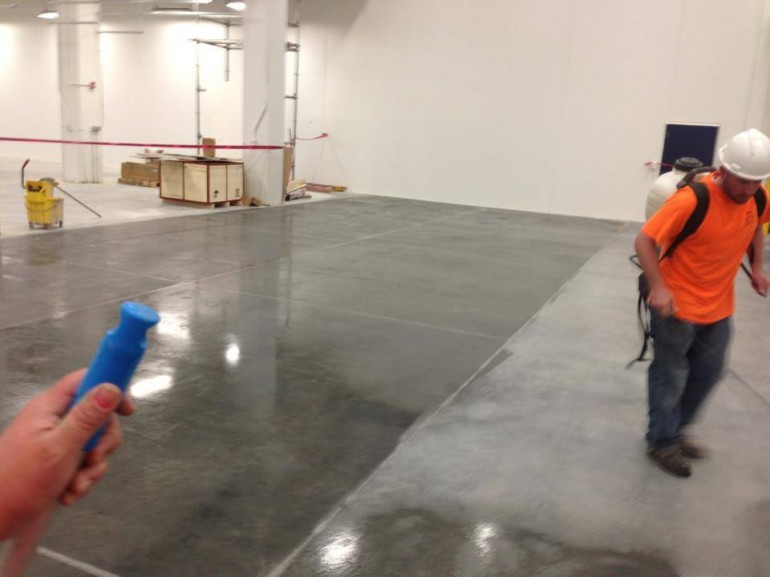
![]()
How do you know when to apply a chemical hardener? All concrete is different, and it’s best to evaluate each substrate before you apply a densifier. Some say that the only time to apply chemical hardener is during the polishing phase after the stain or dye has been applied, as well as after the 200-grit resin-bond diamond has made its passes. The logic behind this is that by applying the densifier in the order, the color will be locked in. This is true when it comes to hard concrete, but it isn’t the same for soft concrete.
Depending on the desired finish, with soft to medium concrete densifier can be applied successfully after the 80-grit diamond and then doing the next sequence of grits. With medium-hard concrete densifier can usually be applied around the 200 to 400-grit range. The level of hardness should be determined prior to beginning any projects and can be done by using a Mohs hardness pick.
Although densifier can be applied after grinding with the 80-grit metal-bond diamond, it can be successful to apply the densifier to concrete after color has been applied, which is around 400 grit. Timing varies when it comes to applying densifier to concrete that will be dyed or acid stained. When using dyes the dye can be applied after the densifier because they will penetrate easily due to their solubility. Dyes do not require a chemical reaction to work, but acid stains do. When using acid stains, the densifier is best applied after the stain has been applied, rinsed, and neutralized. This is due to the densifier creating a less absorbable substrate that could prevent the penetration and reaction of the stain.
One of the most important things to consider when applying a densifier is to understand the concrete itself. The main forms of densifiers are made of potassium, sodium, and lithium silicates, in addition to the newer form of nanotechnology and colloidal silicates. Overall, a silicate is a silicate and the potassium, sodium, and lithium are the carriers of the silicate that delivers the densifier which allow it to react with the concrete.
The exact chemistry of how densifiers function is complicated, but generally silicates react with remaining calcium hydroxide in the concrete, which comes from the hydration process. Adding the silicate to the porous structure and capillaries of the concrete creates a hard substrate that is impermeable with a surface that is less prone to dusting. (For more detailed information about densifiers click here.)
At Custom Concrete Creations we have state of the art equipment and a properly trained team with years of experience. Custom Concrete Creations is a premier contractor serving the Omaha area as well at the Midwest. Give us a call or send us an email for your custom concrete finishing needs today!
